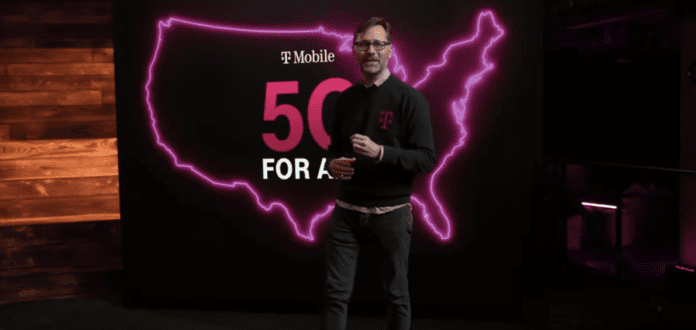T-Mobile US this week report a strong first quarter marked by 1.2 million postpaid net subscriber additions and 773,000 postpaid adds. T-Mo reported total revenue of $19.8 billion with net income of $993 million. In what CEO Mike Sievert described as a “beat-and-raise quarter,” the operator has raised full-year guidance to 4.9 million postpaid subscriber additions from 4.7 million with both figures representing the high-end of guidance.
Sievert attributed this success to a “worst-to-first” strategy that he associated with marked improvements around market perception in particular T-Mobile’s 5G service offering. Siever said, according to a transcript provided by The Motely Fool, that “the percentage of customers who say T-Mobile is the 5G company has increased nearly 120% over the last year and a half…Perception is absolutely catching up to the reality that T-Mobile is the clear 5G leader, with 5G quickly becoming one of the top things that customers say they’re looking for in their next wireless provider.”
On the network side, T-Mobile’s 600 MHz standalone 5G network, branded “Extended Range 5G,” covers 295 million people over 1.6 million square miles, and its 2.5 GHz network, called “Ultra Capacity 5G,” covers 140 million people against a 2021 year-end goal of 200 million people covered. Sievert called the “rapid expansion of Ultra Capacity 5G” a “game changer. We’re rolling it out at an unprecedented pace to deliver the truly transformational speeds and capabilities enabled by 2.5 GHz and above.”
T-Mobile’s “5G for All” marketing includes a focus on small and rural markets. In addition to its 5G mobile network, T-Mobile has a fixed wireless service that covers around 30 million homes with many in smaller and rural towns and cities. Last month company EVP of Consumer Markets Jon Freier laid out the goal of becoming a “hometown network” in rural America. Frier said T-Mobile will create 7,500 new jobs in rural communications over the next two years. Those jobs will be in new retail stores opening in smaller towns and also via a new program called “Hometown Experts.” That program involves individuals serving as one-stop company reps in areas where there aren’t brick and mortar retail locations.
On the earnings call this week, Vice President of Technology Neville Ray called the rural focus a “massive differentiator” as compared to AT&T and Verizon. “There is only one choice on 5G in rural America today.” Ray said the plan is to add around 10,000 incremental cellular sites in the next couple of years with several thousands by the end of this year. “There will be more in ’22 and again in ’23…We continue to improve and enhance coverage across the full coast-to-coast footprint of the U.S. But in the rural territory, Jon [Freier is] crazy busy rolling out distribution.”
On the enterprise side, T-Mobile has recently discussed its ambition to double market share from less than 10% over the next five years. In execution that looks like the development of specialized sales and service teams attuned to the needs of specific enterprise segments. T-Mo has also partnered with Lumen Technologies, formerly CenturyLink, to combine the former’s 5G network with the latter’s edge computing infrastructure.
This week Sievert said he’s “really excited” about the Lumen partnership and the two firms are “working on some use cases. I expect to have something to talk about that later in the year when those come into market…we think there’s a lot of exciting potential there to really help enterprises transform parts of their business and bring new services to their customers. So more to come on that one.”

